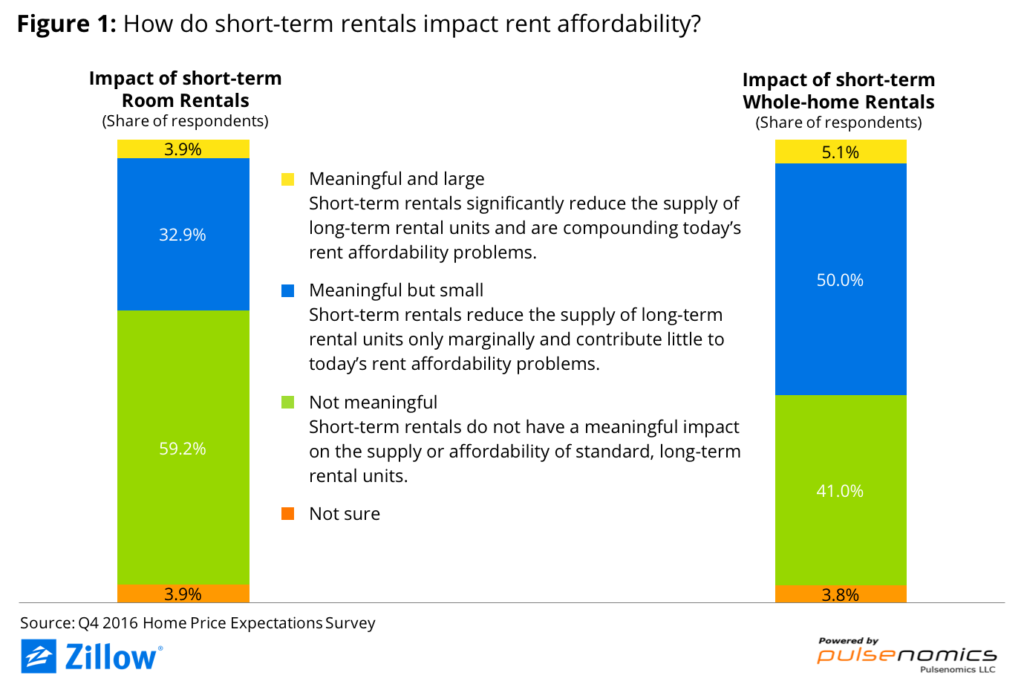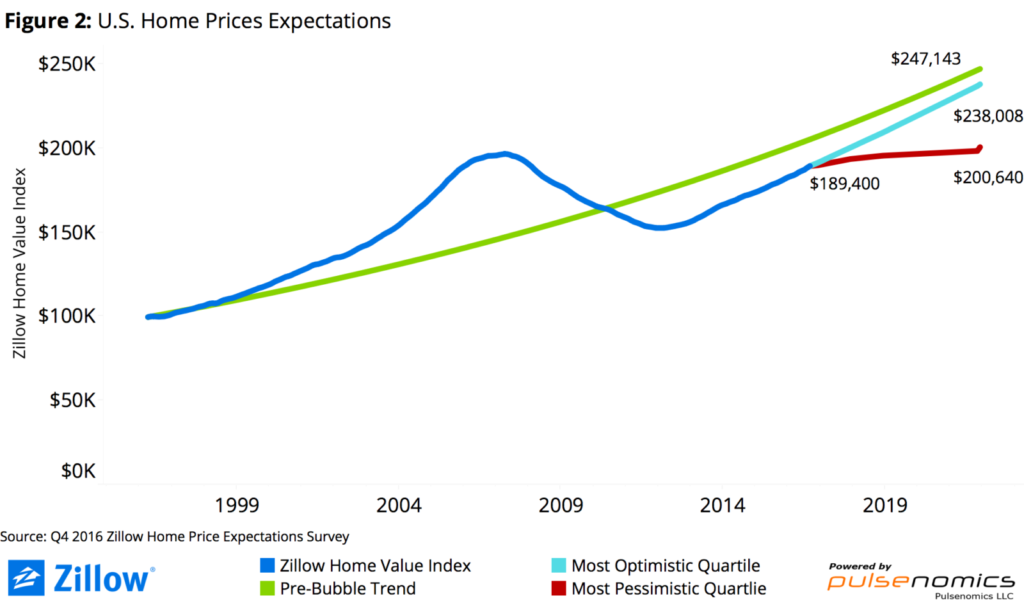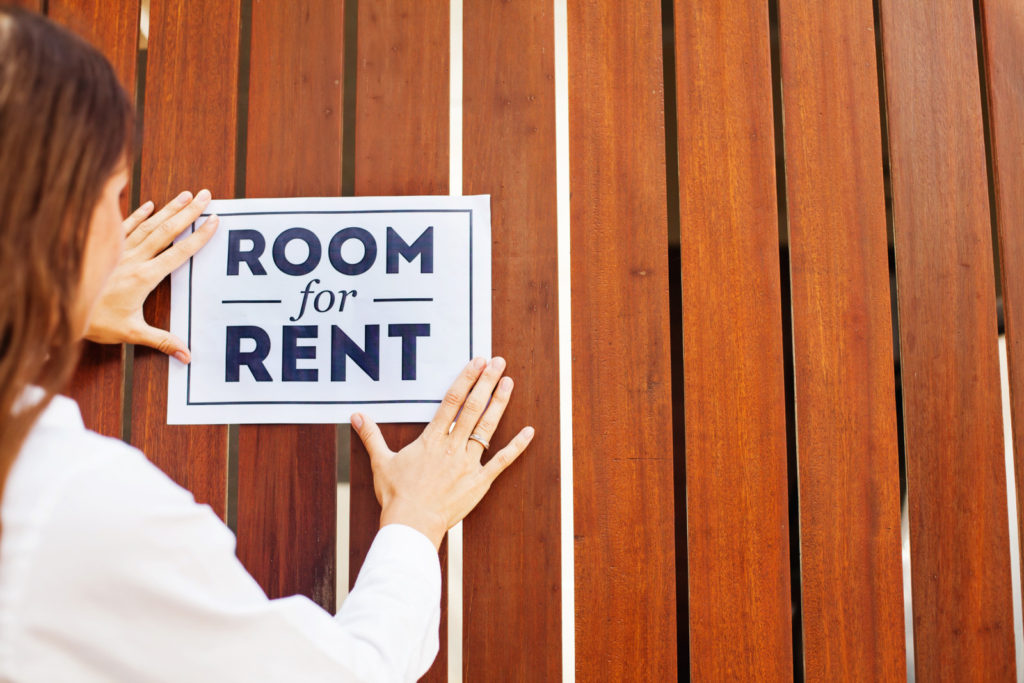Experts: Short-Term Home Rentals Have Little to No Impact on Housing Affordability
The growing presence of short-term room and home rental services like Airbnb and HomeAway are not impacting the overall supply or affordability of rental housing in a meaningful and large way, according to experts, though some smaller effects may be felt in certain markets or segments.
 •
Dec 06 2016
•
Dec 06 2016
- Just 5.1 percent of housing experts with an opinion said the ability to rent entire homes for short periods would have a meaningful, large impact on the supply and affordability of more traditional, longer-term rentals.
- On average, panelists said they expected home values to end 2016 up 4.75 percent year-over-year, a bump in expectationsfrom 4.5 percent annual growth for this year the last time the survey was conducted.
- Median U.S. home values peaked at $196,600 in April 2007. On average, panelists said they expected the median U.S. home value to surpass this peak by November 2017.
The growing presence of short-term room and home rental services like Airbnb and HomeAway are not impacting the overall supply or affordability of rental housing in a meaningful and large way, according to experts, though some smaller effects may be felt in certain markets or segments.
 Just 5.1 percent of housing experts with an opinion said the ability to rent entire homes for short periods would have a meaningful, large impact on the supply and affordability of more traditional, longer-term rentals, according to the Q4 Zillow Home Price Expectations Survey (ZHPE). [1] An even smaller share, just 3.9 percent, said the ability to rent smaller rooms within a larger home would have a meaningful and large impact on the overall rental market (figure 1).
Just 5.1 percent of housing experts with an opinion said the ability to rent entire homes for short periods would have a meaningful, large impact on the supply and affordability of more traditional, longer-term rentals, according to the Q4 Zillow Home Price Expectations Survey (ZHPE). [1] An even smaller share, just 3.9 percent, said the ability to rent smaller rooms within a larger home would have a meaningful and large impact on the overall rental market (figure 1).
Cities nationwide are debating the role short-term home and room rentals play in housing affordability. One view suggests short-term rentals subtract from the supply of standard, long-term rental homes and contribute to rising rents. Others argue short-term rental units give homeowners an additional source of income, allowing them to more easily pay their monthly mortgage payment, contribute to savings or afford other necessities.
But while a sizable majority of experts surveyed said they did not think short-term rentals were likely to have a large impact on a given market, half of those with an opinion indicated the ability to rent an entire home for a short period is having smaller impacts on the market. And 32.9 percent said the ability to rent a single room for a short period is impacting the market in a small way.
When asked to offer commentary and context on their opinions, several experts gave differing reasons for the more limited effect they expected short-term rentals to have. One noted that the hotel industry was likely to be more impacted than the larger market overall. A different expert noted that the short-term and long-term rental markets were different and not effective substitutes. Another said the impact may be felt more acutely in very tight, supply-constrained markets like those in California and other booming coastal states, but that those effects likely wouldn’t spill over into the larger market. The same panelist also said growth in the short-term rental market was likely cyclical, closely tied to the discretionary income Americans have available for travel.
Whether or not short-term rentals play a large role, cities across the country are grappling with housing affordability issues, especially in places with rapidly rising rents and home values. In some hot West Coast markets, it’s not uncommon for renters to spend 40 percent or more of their income on a monthly rental payment, when historically that number was much lower. Inventory shortages play a large role in this affordability crisis; there simply aren’t enough rentals on the market to keep prices low.
But clearly, experts aren’t convinced that short-term rentals are causing the problem.
Home Value Growth: The Peak is in Sight
On average, panelists said they expected home values to end 2016 up 4.75 percent year-over-year, up from 4.5 percent annual growth for this year the last time the survey was conducted and in line with recent acceleration in home values as measured by the Zillow Home Value Index. Looking farther ahead, panelists on average said they expected the annual pace of home value appreciation to slow to 3.6 percent in 2017, 2.97 percent in 2018, to 2.7 percent in 2019 and to 2.6 percent in 2020, before accelerating slightly to a 2.84 percent annual pace in 2021. Cumulatively, experts said they expected home values to grow a total of 21.36 percent, on average, through 2021.
Panelists’ views were divided when separated into more optimistic and more pessimistic camps, especially when looking over the longer term. The most optimistic quartile of panelists said they expected U.S. home values to rise 5.2 percent through the end of this year. The most pessimistic 25 percent of panelists said they expected home values to rise 4.3 percent year-over-year through 2016. Looking farther out, the most optimistic panelists said they expected home values to grow by a total of 30.8 percent from now through the end of 2021. Pessimists predicted total, cumulative home value growth of just 10.2 percent over the same time (figure 2).
Median U.S. home values peaked at $196,600 in April 2007. On average, panelists said they expected the median U.S. home value to surpass this peak by November 2017 – more than a decade after pre-recession peaks. The most optimistic panelists said they expected home values to surpass pre-recession peaks by July of next year, on average, while the most pessimistic said they didn’t expect a full recovery in home values until January of 2020.

[1] ZHPE, sponsored by Zillow and administered by Pulsenomics LLC, is a quarterly survey of more than 100 real estate professionals, academics and economists nationwide that asks experts to offer their opinion on relevant housing issues and predict the path of home values over the next several years. This edition of the Zillow® Home Price Expectations Survey surveyed 111 experts between October 28 and November 15, 2016.


